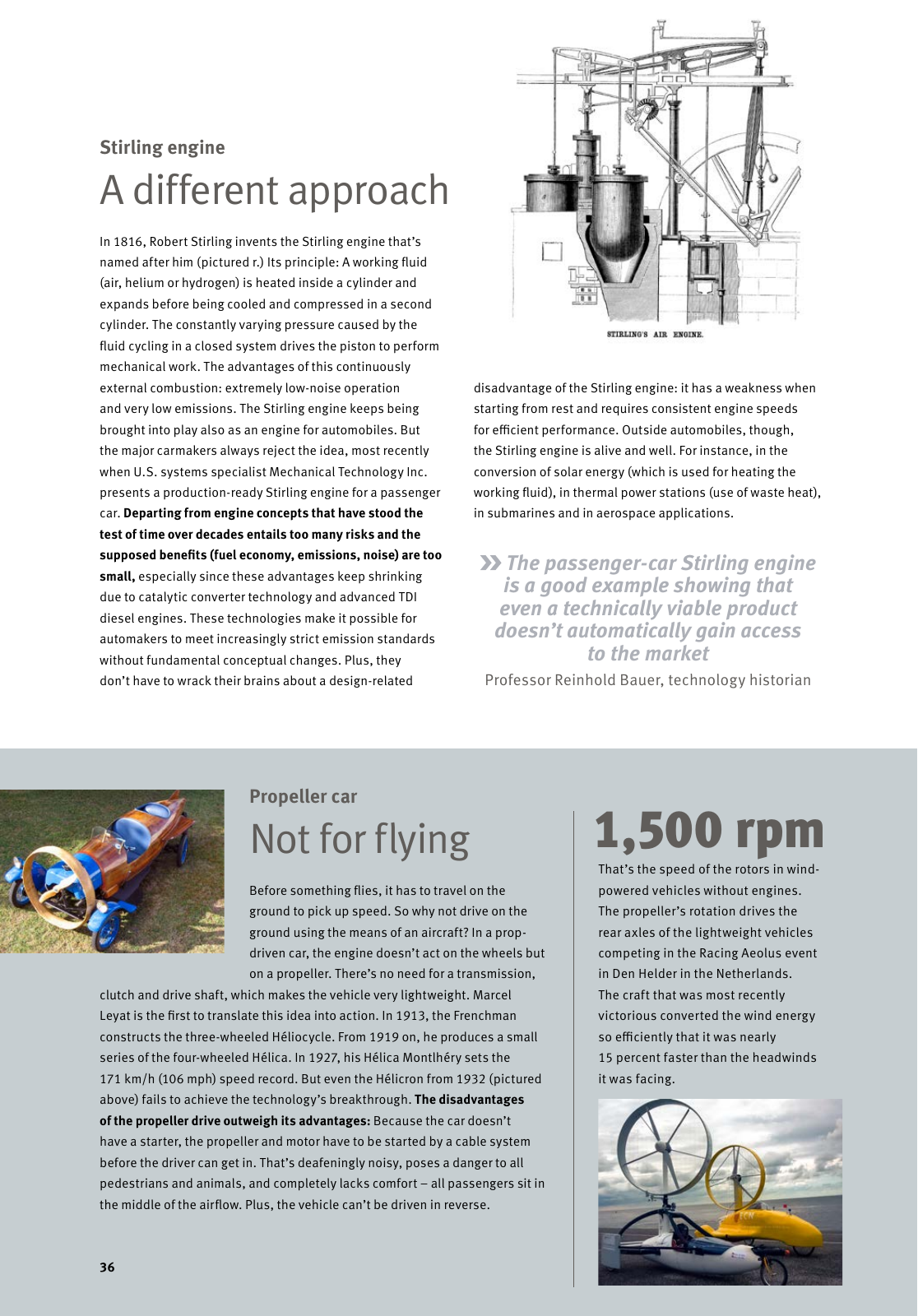Stirling engine Propeller car In 1816 Robert Stirling invents the Stirling engine that s named after him pictured r Its principle A working fluid air helium or hydrogen is heated inside a cylinder and expands before being cooled and compressed in a second cylinder The constantly varying pressure caused by the fluid cycling in a closed system drives the piston to perform mechanical work The advantages of this continuously external combustion extremely low noise operation and very low emissions The Stirling engine keeps being brought into play also as an engine for automobiles But the major carmakers always reject the idea most recently when U S systems specialist Mechanical Technology Inc presents a production ready Stirling engine for a passenger car Departing from engine concepts that have stood the test of time over decades entails too many risks and the supposed benefits fuel economy emissions noise are too small especially since these advantages keep shrinking due to catalytic converter technology and advanced TDI diesel engines These technologies make it possible for automakers to meet increasingly strict emission standards without fundamental conceptual changes Plus they don t have to wrack their brains about a design related Before something flies it has to travel on the ground to pick up speed So why not drive on the ground using the means of an aircraft In a prop driven car the engine doesn t act on the wheels but on a propeller There s no need for a transmission clutch and drive shaft which makes the vehicle very lightweight Marcel Leyat is the first to translate this idea into action In 1913 the Frenchman constructs the three wheeled Héliocycle From 1919 on he produces a small series of the four wheeled Hélica In 1927 his Hélica Montlhéry sets the 171 km h 106 mph speed record But even the Hélicron from 1932 pictured above fails to achieve the technology s breakthrough The disadvantages of the propeller drive outweigh its advantages Because the car doesn t have a starter the propeller and motor have to be started by a cable system before the driver can get in That s deafeningly noisy poses a danger to all pedestrians and animals and completely lacks comfort all passengers sit in the middle of the airflow Plus the vehicle can t be driven in reverse A different approach Not for flying The passenger car Stirling engine is a good example showing that even a technically viable product doesn t automatically gain access to the market Professor Reinhold Bauer technology historian disadvantage of the Stirling engine it has a weakness when starting from rest and requires consistent engine speeds for efficient performance Outside automobiles though the Stirling engine is alive and well For instance in the conversion of solar energy which is used for heating the working fluid in thermal power stations use of waste heat in submarines and in aerospace applications That s the speed of the rotors in wind powered vehicles without engines The propeller s rotation drives the rear axles of the lightweight vehicles competing in the Racing Aeolus event in Den Helder in the Netherlands The craft that was most recently victorious converted the wind energy so efficiently that it was nearly 15 percent faster than the headwinds it was facing 1 500 rpm 36

Hinweis: Dies ist eine maschinenlesbare No-Flash Ansicht.
Klicken Sie hier um zur Online-Version zu gelangen.
Klicken Sie hier um zur Online-Version zu gelangen.